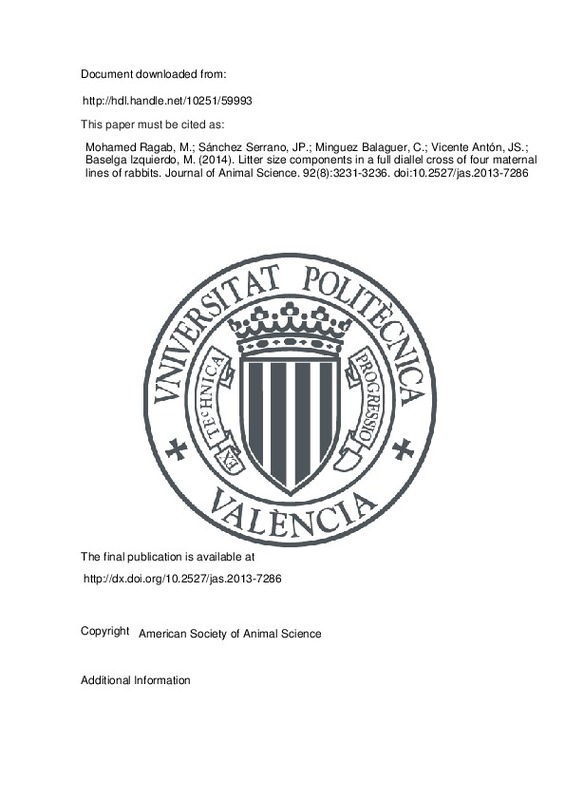JavaScript is disabled for your browser. Some features of this site may not work without it.
Buscar en RiuNet
Listar
Mi cuenta
Estadísticas
Ayuda RiuNet
Admin. UPV
Litter size components in a full diallel cross of four maternal lines of rabbits
Mostrar el registro completo del ítem
Mohamed Ragab, M.; Sánchez Serrano, JP.; Mínguez Balaguer, C.; Vicente Antón, JS.; Baselga Izquierdo, M. (2014). Litter size components in a full diallel cross of four maternal lines of rabbits. Journal of Animal Science. 92(8):3231-3236. https://doi.org/10.2527/jas.2013-7286
Por favor, use este identificador para citar o enlazar este ítem: http://hdl.handle.net/10251/59993
Ficheros en el ítem
Metadatos del ítem
| Título: | Litter size components in a full diallel cross of four maternal lines of rabbits | |
| Autor: | Mohamed Ragab, Mohamed Sánchez Serrano, Juan Pablo Mínguez Balaguer, Carlos Baselga Izquierdo, Manuel | |
| Entidad UPV: |
|
|
| Fecha difusión: |
|
|
| Resumen: |
[EN] A crossbreeding experiment between 4 Spanish maternal lines of rabbits was performed to estimate crossbreeding effects on litter size components. The experiment was designed as a complete diallel cross involving 4 ...[+]
|
|
| Palabras clave: |
|
|
| Derechos de uso: | Reserva de todos los derechos | |
| Fuente: |
|
|
| DOI: |
|
|
| Editorial: |
|
|
| Versión del editor: | http://dx.doi.org/10.2527/jas.2013-7286 | |
| Código del Proyecto: |
|
|
| Agradecimientos: |
|
|
| Tipo: |
|







![[Cerrado]](/themes/UPV/images/candado.png)


